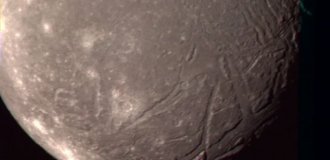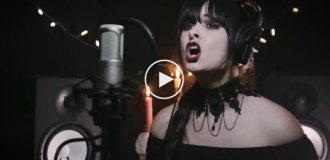About someone who did not return from a combat mission (24 photos + text)
During April 30, 1942, nothing significant happened at the front. On April 30, units of our aviation destroyed or damaged 95 German vehicles with troops and cargo, 12 guns, 7 mortars, 5 anti-aircraft machine gun points, blew up several ammunition depots, scattered and partially destroyed up to two companies of enemy infantry. On April 30, 38 German aircraft were destroyed. Our losses are 9 aircraft.

From reports of the Soviet Information Bureau
Among our combat losses that day were the legendary Il-2 attack aircraft. At the helm of one of these single-seat vehicles, Mikhail Petrovich Gavrilov, lieutenant, deputy commander of the 2nd squadron of the 568th attack air regiment, went on his last combat mission. And disappeared.
In 1942, Lieutenant Gavrilov was already an experienced pilot. He had at least 27 combat missions, 20 of which were assaults on enemy personnel, tanks, artillery and airfields. According to incomplete data, but confirmed by escort fighters and ground units, he destroyed 6 tanks, 45 vehicles with troops and cargo, 10 artillery pieces, 4 anti-aircraft artillery batteries, 12-15 fortified points and over 500 Nazis. Let me emphasize once again: the data is confirmed, but incomplete.
Mikhail Gavrilov met the war as part of the 66th ShAP. The regiment was then based in Komarno, Kurowice and was armed with 58 I-15bis aircraft, as well as 5 Il-2s, which had not yet been mastered by pilots. On June 22, 1941, as a result of the first enemy air raid on the Kurowice airfield, 36 aircraft were disabled. By the end of the day, the regiment had 24 I-15bis and 3 Il-2 left. Subsequently, the regiment's pilots selflessly attacked motorized mechanized troops and repelled raids by enemy bombers. On June 28, 1941, the surviving I-153 62 ShAP were transferred to the regiment. On this day, 35 “horseless” pilots, together with the regiment commander S.S. Shcheglikov, left for Uman for retraining on the Il-2, and the remaining pilots continued to operate at the front under the command of Captain A.I. Sevastyanov.

At the beginning of July, the remnants of the regiments that were part of the 15 SAD (23 IAP, 62 ShAP, 66 ShAP, 89 IAP) were informally consolidated into one regiment, the basis of which was the aircraft and pilots of the 66 ShAP. The combined regiment was commanded by Colonel A.I. Sidorenko (commander of the 23rd IAP), the military commissar was battalion commissar Panchenko, and the chief of staff was Captain Zverev from the 89th IAP. The “consolidated” regiment took part in the defense of Kyiv, fighting until September 1941. At the same time, it was usually called 66 ShAP.

At the end of July 1941, that part of the 66 ShAP returned to the front that had undergone retraining on the Il-2 under the name 66 ShAP. But these regiments conducted combat operations independently of each other, as independent units. At the end of August 1941, the “consolidated” 66 ShAP left for the city of Balashov for reorganization and part of the personnel of the former fighter regiments, which replenished the 66 ShAP in June-July, went to form the new 66 IAP. Another part of the flight and technical personnel from the attack air regiments formed the basis for the formation of the new 820 ShAP. Later, in May 1943, for differences in the defense of Kyiv, both 66 ShAP and 820 ShAP received the honorary name Kiev, although formally the military unit with the number 820 did not take part in the defense of Kyiv.
War in the air
On April 1, 1942, at 14.45, four Il-2 568 ShAP (2 UAG, Northwestern Front) were lifted into the air: Gavrilov, Kireev, Belov, Shtevnin, accompanied by seven LaGG-3 fighters. The task is to strike the enemy in the area of Mikhalkino, Dmitrievo, M. Gorby. Only Gavrilov returned to his airfield. He reported that on the first approach the group was met by strong anti-aircraft fire, but, skillfully maneuvering, it successfully carried out the attack. On the second approach, the anti-aircraft fire intensified: a continuous curtain of fire stood in front of them. Having broken through it, the group rushed towards the enemy tanks and soon began to safely emerge from the attack. Upon exiting the dive, the plane of the last group, Ivan Shtevnin, exploded.


Gavrilov began a maneuver for the third attack, but at the same moment he noticed fiery trails above him. 4 Bf-109s attacked three attack aircraft, and three LaGGs rushed to their aid. The remaining four LaGGs were engaged in a fierce battle with several Messerschmitts. The battle lasted about fifteen minutes. But in the end, the Messers managed to split the formation of attack aircraft and fighters and forced them to fight one by one. Gavrilov did not see how Kireev and Belov were shot down and where they fell or landed.

On April 3, 1942, while carrying out a combat mission to attack the Volot and Tuleblya railway stations as the deputy leader of a group of four Il-2 attack aircraft (without fighter cover), Gavrilov and his comrades were attacked by three Me-109 fighters. In the first attack, the Germans shot down the leader of the group of attack aircraft and decided to hit the wingmen - junior lieutenants Feoktistov and Argba.
Lieutenant Gavrilov took command of the group and immediately entered into a twenty-minute battle with enemy fighters. The battle was observed from the ground by the head of the Air Force II A (sic) Colonel Ivanov and a group of fighter pilots. They sent a letter to the commander of the 2nd UAG, “full of admiration for the courage and bravery of Lieutenant Gavrilov.” Pilot Gavrilov managed to successfully resist German fighters in his Il-2 and even attack them. For which Mikhail Petrovich was presented with a government award - the Order of the Red Banner.
The Order of the Red Banner (Order of the Battle Red Banner, Order of the Red Banner) is the first of the Soviet orders. The order was established to reward special bravery, dedication and courage shown in the defense of the socialist Fatherland. The Order of the Red Banner was also awarded to military units, warships, state and public organizations. Until the establishment of the Order of Lenin in 1930, the Order of the Red Banner remained the highest order of the Soviet Union. It was established on September 16, 1918 during the Civil War by decree of the All-Russian Central Executive Committee. Initially it was called the Order of the Red Banner.
By order 0512 for the troops of the Northwestern Front of April 24, the pilot was awarded the Order of the Red Star.
The Order of the Red Star was established by the Resolution of the Presidium of the Central Executive Committee of the USSR dated April 6, 1930. The statute of the order was established by the Resolution of the Presidium of the Central Executive Committee of the USSR of May 5, 1930. The Order of the Red Star was established to reward great achievements in the defense of the USSR, both in war and peace, in ensuring state security. The Order of the Red Star is awarded to: military personnel of the Soviet Army, Navy, border and internal troops, employees of the USSR State Security Committee, as well as private and commanding officers of internal affairs bodies; military units, warships, formations and associations, enterprises, institutions, organizations.
In the Demyansk Cauldron
So who is he - attack pilot Gavrilov? Born in 1916, Russian, worker, candidate member of the CPSU(b) since 1939 and, according to updated data, member of the CPSU(b) since the spring of 1942. Member of the Red Army since 1934. He took part in the Polish campaign of 1939, and from June 22, 1941 he fought as part of the 66th ShAP. He was not wounded or shell-shocked; he was nominated for government awards for his courage and heroism. He is devoted to the cause of the Lenin-Stalin party and the socialist Motherland. According to TsAMO, he went missing on April 30, 1942. He did not return from a combat mission on the last day of the Lyuban offensive operation of the Red Army. The tragically famous Demyansk offensive operation was also coming to an end.
In the Demyansk area, 6 enemy divisions, about 100,000 people, were surrounded. The heaviest battles to eliminate the encircled troops dragged on; the Germans managed to establish an “air bridge” that allowed them to transfer reinforcements, ammunition and food to the encircled troops. In March 1942, the enemy, with the support of the 1st Air Fleet, began an operation to relieve the blockade of its troops. For a month there were continuous battles and as a result the Germans broke the encirclement.
The so-called “Ramushevsky” (named after the village of Ramushevo) corridor 6-8 km wide (data as of the end of April 1942). The Red Army Air Force attack aircraft that fought in the Demyansk area made a significant contribution to the defeat of the encircled enemy units and more than once attacked German airfields, disrupting the operation of the Goering air bridge. There is reason to believe that Lieutenant Gavrilov stormed one of these airfields - in Glebovshchina or in Peski. And on the way “home” he was shot down by enemy fighters or anti-aircraft artillery. Didn't make it to the base, fell somewhere. No one knew where exactly.
68 years later
Lieutenant Gavrilov and his Il-2 were found in a swamp 68 years after their death. Two weeks ago. Anatoly Stepanovich Pavlov, commander of the Demyansk search detachment, and his comrades spent several days extracting from the peat slurry everything that was left of the single-seat attack aircraft Il-2. Generally speaking, not much remained: the armored hull, the engine, and debris from the aircraft structure. And most importantly, the remains of the pilot were found inside the armored compartment. Such a find cost several days of hard work by a dozen volunteers, worn-out tracked and wheeled vehicles, and a pump that constantly pumped swamp water out of the excavation. This is what it looked like:






In a helmet, in overalls, with head-over-heels on his tunic, and in tarpaulin boots, the pilot rested in the destroyed cockpit of his plane. After the war, the “flying tank” was blown up by unknown “well-wishers”: it was necessary to live somehow, and the crashed plane was a source of valuable non-ferrous metals, and, therefore, money. The pilot did not have a parachute, a pistol or a watch - someone managed to pull out all of the above immediately after the war. And then the plane settled deep in the swamp and lay there until October 2010, keeping the secret of the pilot’s name.

Name set
After discovering the remains of the pilot and completing the operation to recover fragments of the combat aircraft, the search engines began an equally time-consuming task - identifying the identity of the pilot. The documents found on the tablet were unreadable. There are no awards or personal weapons. A search using the engine number recovered from the swamp yielded the following information: single-seat IL-2, AM-38sh engine, engine number Ш28563, aircraft number 1879701. 568 ShAP, 2nd Strike Air Group. Based on these data, it could be assumed that the pilot M.P. was at the helm of the attack aircraft. Gavrilov, a native of the Sekachi village, Komsomolsky district, Stalingrad region.
































